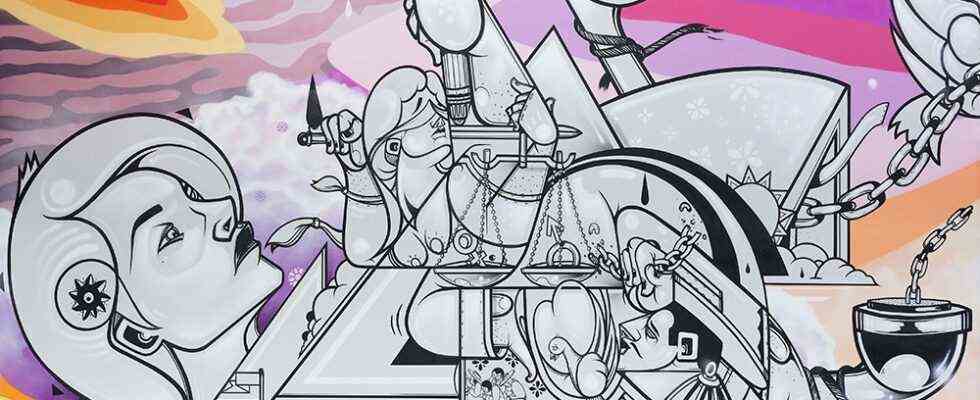Blossoms and war machines, Benin masks and inkwells from which blood-red splatters slosh: the mural that the New York artist How and Nosm painted in the first room of the Berlin exhibition is both decoration and program. Instead of a story, it shows a kind of stream of consciousness. “Welt / Stadt / Berlin” was once the working title of this show. This raised the fear that Berlin would calculate once more that it was a cosmopolitan city. The exhibition is now called “Berlin Global” and its theme is not Berlin, but its interweaving with the world.
During the long planning years of the Humboldt Forum, Berlin was among the “actors” of the outsiders. The Dutchman Paul Spies, who is in charge of the Berlin City Museum, only came in 2016 and is the only non-German among the lords of the palace. He was neither entangled in the Berlin networks, nor worn out by the endless battles. But Spies also remained so quiet because he could only realize an exhibition that sees itself as a counter-program to the rest of the house.
Instead of telling Berlin’s history, he organizes the show along themes such as “war”, “pleasure” or “revolution”. He simply leaves out familiar things. There is more to be seen here about colonialism than about World War II, more about the time after the fall of the wall than about the wall itself.
Instead of looking for the specific, he shows Berlin as a hub, sender and receiver. It deals not only with Berlin’s borders, but also with the borders drawn at the Berlin Africa Conference in 1884/85. First he lets the echoes of New York hip-hop reverberate in East and West Berlin, then he follows the global influence of Berlin’s techno culture.
Almost everything in the Humboldt Forum is old and made for old people. Spies, who already has an old house with the Märkisches Museum, is aiming for visitors who should ideally be around 17 years old. Music, racism, living, the present in general, take up a lot of space, history primarily serves to answer today’s questions.
`We’ll rent you out. Evacuation in peace “, is written on the wreath that” Dein Airbnb “placed on the” rent grave “by the artist collective Rocco and his brothers.
(Photo: Oana Popa-Costea / Stadtmuseum / Kulturprojekte Berlin)
This anti-concept was obviously inspiring. The joy of playing also pulses through the design. Every room is full of ideas: a walk-in disco ball; a grave in which the rent of 6.20 euros was buried; and photos of wild club nights in the nineties, projected onto walls that are getting closer and closer to the viewer – compression in fast motion. Different is more of a gimmick. Like the “wheel of history”, which can only be rotated together with others, or the portable transmitters that register the visitors’ paths.
But the designers wanted more than just luring students away from their cell phones. This can be seen in the knobs on the floor, which are otherwise known from the platform, in the clips, which turn out to be holders for white canes. The designers exceed the requirements for accessibility and make them a statement. They even thought of a “scent station” as a sensual offer for those who cannot see. All of this not only helps the disabled, it shows non-disabled people what a museum, a city should look like.
The idea of inclusion and participation is played out through to the attempt to turn the museum principle on its head. Instead of showing believers or migrants from an ethnologist’s point of view, Spies let them have their say. The former members designed a module for two youth centers themselves (one of the groups terminated its collaboration in protest against the Humboldt Forum on Friday). Three “open spaces” in the exhibition can be used by changing initiatives. Makes sense in this house where so many professionals have failed.
But because of all the ideas, the content gets out of sight in places. For many, everything is too confused, too colorful, too woke appear. Trying to compensate for everything that went wrong in the rest of the house inevitably leads to a new imbalance, just with the opposite inclination.

